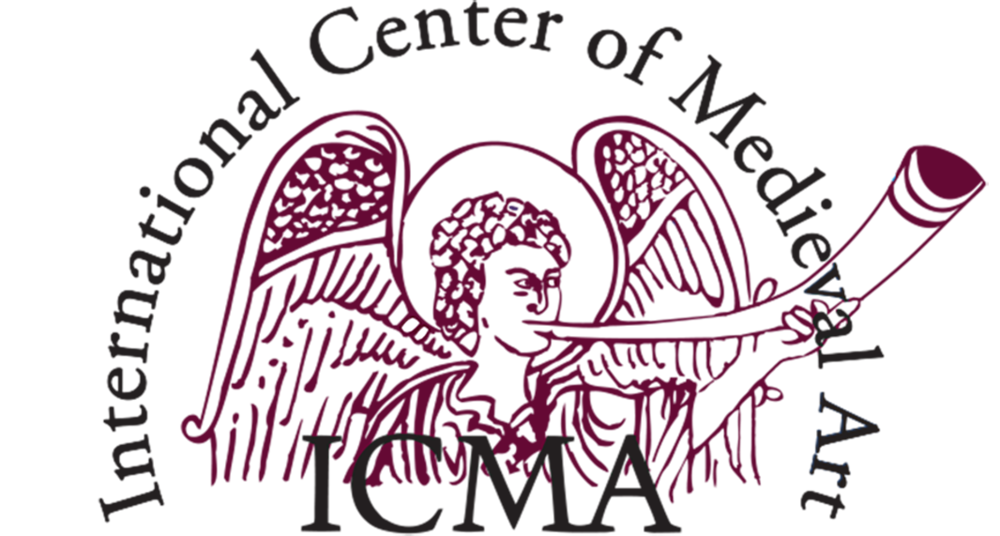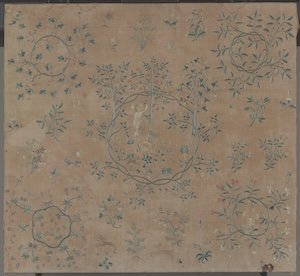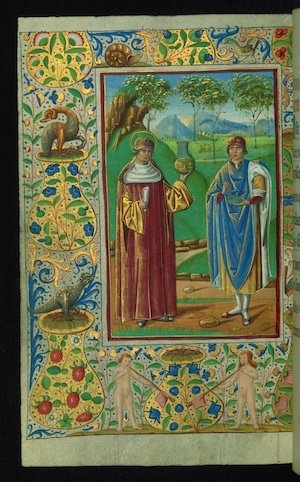Call for papers
When the archaeological object is a historical subject. Perception, function and reception of artefacts
ArchéOrigines
Lyon, 14-15 November 2024
Due By 15 July 2024
The ArchéOrigines junior research laboratory, founded with the support of the Maison de l’Orient et de la Méditerranée nearly two years ago, has devoted all its activities to the history of archaeology. In 2023, we organised a round-table seminar on the words of archaeology, followed by a workshop on the birth of archaeological museums. The diversity of the “Histories of Archaeologies” was presented in Dijon and, more recently, a seminar on the connections between archaeology and nationalism was held in Lyon. Lastly, the contribution of gender studies to the history of archaeology was put into perspective on 18 April 2024. The conference closing the programme of this junior laboratory will focus on the archaeological object and its importance in the history of this discipline.
Since the end of the twentieth century, the concept now known as “material turn” has given rise to new ways of considering the framework for the study of the object, no longer confining it to a simple research case, but bringing it fully into history as an agent. This notion has proved particularly fruitful in archaeology where the idea of material culture studies is the subject of lively discussions within the archaeological and anthropological communities (Hicks 2010, p. 25-98). Similarly, the role of material culture has redefined certain aspects of global history, particularly in the conceptualisation of space and in providing different scales of analysis (Riello 2022, p. 193-232).
An archaeological object is first and foremost a material vestige, i.e. evidence of human activity on, initially, natural materials (Djindjian 2011, p. 167-177). While its meaning is increasingly wide, the archaeological object must inevitably be identified by an archaeologist, who makes this particular object a material source that can be used to think past societies, while the place given to the object itself in history is often questioned (Gauvard & Sirinelli 2015, p. 660-662). The object is therefore the archaeologist’s main source who lays down several theoretical rules for its study. An isolated artefact loses most of its scientific value outside the context in which it was discovered, that is why methodical excavations make it possible to unearth close-set objects that are essential to archaeologists. Similarly, the setting up of a corpus and the standardization of types are fundamental steps and, today, numerous physico-chemical processes allow to deepen the material knowledge of an object.
The “isolated object”, the “beautiful object” or the “work of art” – the boundaries between these different categories are fluid – is very present in the history of archaeology. Collectors, art dealers, archaeologists, or art historians perceive the object differently, that is why the object as such is not an element of disciplinary definition. Many representations have been constructed on the basis of an object alone and/or isolated from its context (illegal excavations, discoveries made by detectorists, purchases on the art market, etc.). Despite the loss of scientific interest, isolated objects still arouse our contemporaries’ interest, since a single artefact, sometimes even a “unicum”, can be an “emblematic object”, and thus become a key element in the image we have of an ancient society.
The history of archaeological objects is constantly transformed by the new meanings we attribute to them. Krzysztof Pomian describes the artefact as a “sémiophore” (Pomian 1987, p. 42) and, when exhibited in a museum space, it can be called an “expôt” (Desvallées & Mairesse 2011, p. 599). The links between museology and archaeological objects call for further discussion (Kaeser 2015, p. 37-44), as the object changes function and status several times in the course of its life. The archaeological object no longer has its original function, the one for which it was designed, and, for archaeologists, it comes into being, so to speak, at the very moment it is unearthed. Collected, bought from an art dealer or the result of supervised or uncontrolled excavations, the archaeological object is part of a process of discovery, study, exchange, acquisition and exhibition, although these different phases are not necessarily linked together. Major expeditions in the 19th and 20th centuries led to the discovery of archaeological objects that have greatly benefited European museums (Amkreutz 2020; Leblan & Juhé-Beaulaton 2018). These objects are perceived in very different ways: as curiosities, travel souvenirs, scientific objects or objects intended for a museum. The contexts in which they were collected are often little-known and poorly supported by rare or inaccessible documentation, so excavation notebooks, among other sources, are a boon for researchers when they are preserved. In this respect, archives, both institutional and private, represent invaluable knowledge for tracing the constitution of scientific collections in all their dimensions (Daugeron & Le Goff 2014). The transportation of artefacts is an essential part of their history, especially as the historical and institutional framework for excavations is sometimes highly complex. Agreements between states, effective support for explorers (government authorisations, letters of recommendation, decrees, etc.) and local authorisations for excavations are integral part of this context (Gran-Aymerich 2007). Many excavations took place in annexed or occupied territories, sometimes in a colonial context. These specific situations are now deeply rooted in the current issues of restitution, which intersect the history of archaeology and heritage (Lehoërff 2023).
In À qui appartient la beauté ? (Savoy 2024), Bénédicte Savoy looks at all forms of appropriation of works of art and heritage in the context of unbalanced relations between two spaces. She calls these practices “translocation patrimoniale” to distinguish them from the looting and spoliation that occur in other contexts. In short, the artefact is an object of desire for the archaeologist, whether he excavates or not, and it is missing from dispossessed regions. The territorial ownership of works of art, the importance of objects from a scientific point of view and, finally, the question of the ownership of beauty refer to multiple social, political and military issues, some of which still very lively today. This symbolic, tangible and intangible journey has a lasting emotional impact (Fabre 2013).
Thus, a history through archaeological artefacts is necessary. These objects, studied for themselves and in their context, tell us something about the societies of the past and about our own perception. In many cases, the object is subsequently associated with other archaeological artefacts where, organised in a certain way, they can serve a wide variety of purposes. In the second half of the nineteenth century, the creation of museums and the organisation of world exhibitions played a key role in the development of archaeology. The 1867 Paris World’s Fair celebrated agriculture and industry (Vasseur 2023), and the Galerie d’Histoire du Travail incorporated the notion of industry – already used by Jacques Boucher de Perthes – and presented “primitive”, i.e. prehistoric, objects, while Gabriel de Mortillet was responsible for organising the prehistoric collections. Associated with the second session of the International Congress of Prehistoric Anthropology and Archaeology, this major event combined theoretical reflection with an exhibition of archaeological objects and contributed to the recognition of archaeology as a scientific discipline.
So how do objects play a part in our archaeological representations? From the 19th century onwards, certain chronological systems were constructed on the basis of discoveries; this was one of the epistemological possibilities for chronologies, which at that time were driven by the notion of industry. The three-age system is based on the very material of objects and the acceptance of such a system in the mid-nineteenth century was not a given (Rowley-Conwy 2007). The consequences of major discoveries or the study of objects considered remarkable in the construction of prehistoric and protohistoric archaeology, which are struggling to find institutional legitimacy, remain largely to be questioned.
Papers may cover any period or geographical area. Proposals dealing with lesser-known archaeological objects or lesser-studied periods are welcome, as one of our ambitions is to achieve an archaeology “à parts égales” (Bertrand 2011).
Topics of discussion may include, but are not limited to:
Case studies of archaeological objects, from excavation to museum
Artefacts and scholarly networks
The role of the art market in the circulation of objects
Cultural transfers and collecting practices
Exhibition design for archaeological objects
The status of the object and its reception within society
(Re)presentation of the past through artefacts
The object at the heart of conflicts: spoliations, restitutions, confrontations
Digital cartographies and museum databases
This international conference will be held in Lyon on 14-15 November 2024. Abstracts in French or English (maximum 2500 characters) with a title and a short biography will be sent to the following address: archeorigines@gmail.com by 15 July 2024. A notification of acceptance or rejection will be sent to the authors by 30 July 2024. Please note that presentations will last 20 minutes and will be followed by a discussion.
Appel à communications
Quand l’objet archéologique est sujet historique. Perception, fonction et réception des artefacts
ArchéOrigines
Lyon, 14-15 novembre 2024
Avant le 15 juillet 2024
Le laboratoire junior ArchéOrigines, fondé avec le soutien de la Maison de l’Orient et de la Méditerranée de Lyon il y a bientôt deux ans, a consacré toutes ses activités à l’histoire de l’archéologie. En 2023, une table ronde sur « Les mots de l’archéologie », puis une journée d’étude sur la naissance des musées d’archéologie ont été organisées. La diversité des « Histoires d’archéologies » a été présentée à Dijon et, plus récemment, un séminaire sur les liens unissant archéologie et nationalisme a été proposé à Lyon. L’apport des études de genre à l’histoire de l’archéologie a été mis en perspective lors de la journée du 18 avril 2024. Le colloque choisi pour clore le programme de ce laboratoire junior portera sur l’objet archéologique et sa fortune dans l’histoire de cette discipline.
Depuis la fin du XXe siècle, ce que l’on nomme désormais le material turn a donné lieu à de nouvelles manières d’envisager le cadre d’étude de l’objet, de ne plus le cantonner à un simple cas de recherche, mais bel et bien de le faire entrer de plain-pied dans l’histoire en tant qu’agent. Ce concept s’est avéré particulièrement fécond en archéologie où l’idée de material culture studies suscite de vifs débats au sein des communautés archéologique et anthropologique (Hicks 2010, p. 25-98). De même, le rôle de la culture matérielle a permis de redéfinir certains aspects de l’histoire globale, notamment dans la conceptualisation de l’espace et dans l’application de différentes échelles d’analyse (Riello 2022, p. 193-232).
L’objet archéologique est avant tout un vestige matériel, c’est-à-dire le témoignage de l’activité humaine sur, dans un premier temps, des matières naturelles (Djindjian 2011, p. 167-177). Si son acception est de plus en plus large, l’objet archéologique doit être inévitablement identifié par un archéologue qui fait de cet objet particulier une source matérielle exploitable pour penser les sociétés du passé, tandis que la place accordée à l’objet lui-même en histoire est souvent interrogée (Gauvard et Sirinelli 2015, p. 660-662). Aussi, l’objet est la principale source de l’archéologue qui fixe plusieurs règles théoriques pour son étude. Un artefact isolé perd l’essentiel de sa valeur scientifique en dehors de son contexte de découverte, c’est la raison pour laquelle des fouilles méthodiques permettent d’exhumer des ensembles clos indispensables aux archéologues. De même, l’établissement d’un corpus et la mise en série de types sont des étapes fondamentales et, aujourd’hui, de nombreux procédés physico-chimiques permettent d’approfondir la connaissance matérielle d’un objet.
L’objet isolé, le « bel objet » ou l’objet d’art – les frontières entre ces différentes catégories sont mouvantes – est très présent dans l’histoire de l’archéologie. Collectionneurs, marchands, historiens de l’art et archéologues perçoivent l’objet différemment, c’est pourquoi l’objet en tant que tel n’est pas un élément de définition disciplinaire. Les représentations construites à partir d’un objet seul et/ou isolé de son contexte ont été nombreuses (fouilles illégales, découvertes faites par des détectoristes, achats sur le marché de l’art, etc.). Malgré la perte de son intérêt scientifique, l’objet isolé suscite pourtant encore largement l’intérêt des contemporains, puisqu’un seul artefact, parfois même un unicum, peut être un « objet phare » et ainsi devenir un élément constitutif de l’image que l’on porte sur une société ancienne.
L’histoire des objets archéologiques est sans cesse transformée par les sens nouveaux que nous attribuons à ceux-ci. Krzysztof Pomian qualifie l’artefact de « sémiophore » (Pomian 1987, p. 42) et, présenté dans un espace muséal, il peut être appelé « expôt » (Desvallées et Mairesse 2011, p. 599). Les liens entre muséologie et objets de l’archéologie appellent à de nouvelles discussions (Kaeser 2015, p. 37-44), car l’objet change plusieurs fois de fonction et de statut au cours de sa vie. L’objet archéologique n’a plus sa fonction première, celle pour laquelle il avait été conçu et, pour les archéologues, il naît en quelque sorte à l’instant même où il est sorti de terre. Recueilli, acheté à un marchand, issu de fouilles encadrées ou sauvages, l’objet archéologique s’inscrit dans un processus de découverte, d’étude, d’échange, d’acquisition, d’exposition, sans toutefois que ces différentes phases soient nécessairement réunies.
De grandes expéditions des XIXe et XXe siècles ont notamment permis de découvrir des objets archéologiques qui ont largement bénéficié aux musées européens (Amkreutz 2020 ; Leblan et Juhé-Beaulaton 2018). Les perceptions de ces objets sont fort diverses : curiosités, souvenirs de voyage, objets scientifiques ou destinés à un musée. Les contextes de collecte sont souvent mal connus, mal étayés par une documentation rare ou peu accessible, si bien que les carnets de fouilles, entre autres sources, sont une aubaine pour le chercheur lorsqu’ils sont conservés. À cet égard, les archives, tant institutionnelles que privées, représentent un savoir inestimable pour retracer la constitution des collections scientifiques dans toutes leurs dimensions (Daugeron et Le Goff 2014). Le transport des objets représente un pan essentiel de leur histoire, d’autant plus que le cadre historique et institutionnel des fouilles est parfois très complexe. Les accords entre États, les soutiens effectifs aux explorateurs (autorisations gouvernementales, lettres de recommandation, décrets, etc.), les autorisations de fouilles par les locaux font partie intégrante de ce contexte (Gran-Aymerich 2007). De nombreuses fouilles se sont déroulées dans des territoires annexés ou sous occupation, quelquefois en contexte colonial. Ces situations spécifiques sont désormais profondément inscrites dans les enjeux actuels de restitution qui croisent l’histoire de l’archéologie et du patrimoine (Lehoërff 2023).
Bénédicte Savoy, dans À qui appartient la beauté ? (Savoy 2024), s’est intéressée à toutes les formes d’appropriations d’œuvres d’art et de patrimoine lors de relations déséquilibrées entre deux espaces. Elle qualifie ces pratiques de translocation patrimoniale afin de les distinguer des pillages et des spoliations qui surviennent dans d’autres contextes. En bref, l’artefact est un objet de désir pour l’archéologue, qu’il fouille ou non, et il manque aux régions dépossédées. L’appartenance territoriale des œuvres, l’importance des objets du point de vue scientifique et, enfin, la question de l’appartenance de la beauté renvoient à de multiples interrogations sociales, politiques et militaires, parfois toujours aussi vives. Ce trajet symbolique, matériel et immatériel, comprend une portée émotionnelle qui s’inscrit dans la durée (Fabre 2013).
Une histoire par les objets archéologiques doit aussi être menée. Ces objets, étudiés pour eux-mêmes et dans leur contexte, nous renseignent sur les sociétés du passé et sur notre propre regard. Dans de nombreux cas, l’objet est associé a posteriori avec d’autres mobiliers archéologiques où, organisés d’une certaine manière, ils peuvent servir des discours très divers. Dans la deuxième moitié du XIXe siècle, la création des musées et l’organisation d’expositions universelles participent pleinement au développement de l’archéologie. L’Exposition universelle de Paris en 1867 célébrait l’agriculture et l’industrie (Vasseur 2023), la Galerie d’Histoire du travail intégrait la notion d’industrie – déjà employée par Jacques Boucher de Perthes – et présentait des objets « primitifs », donc préhistoriques, tandis que Gabriel de Mortillet se chargeait de l’organisation des collections préhistoriques. Associé à la deuxième session du Congrès international d’anthropologie et d’archéologie préhistoriques, ce grand moment combinait réflexions théoriques et exposition d’objets archéologiques, il contribuait à la reconnaissance de l’archéologie en tant que discipline scientifique.
Comment l’objet intervient-il alors dans nos représentations archéologiques ? Dès le XIXe siècle, certains systèmes chronologiques ont été construits à partir des découvertes, c’était une des possibilités épistémologiques pour les chronologies, alors portées par la notion d’industrie. Le système des Trois Âges repose sur la matière même des objets et la réception d’un tel système au milieu du XIXe siècle n’était pas une évidence (Rowley-Conwy 2007). Les conséquences des grandes découvertes ou de l’étude des objets considérés comme remarquables dans la construction de l’archéologie préhistorique et protohistorique, qui peinent à trouver une légitimation institutionnelle, restent en grande partie à interroger.
Les communications pourront concerner toutes les périodes et toutes les aires géographiques. Les propositions traitant d’objets archéologiques méconnus ou d’époques peu étudiées sont appréciées, une archéologie « à parts égales » (Bertrand 2011) étant une de nos ambitions.
Les interventions pourront, sans s’y limiter, s’inscrire dans les axes suivants :
Études de cas d’objets archéologiques, de la fouille au musée
Artefacts et réseaux savants
Le rôle du marché de l’art dans la circulation des objets
Transferts culturels et pratiques de collection
Scénographie d’exposition des objets archéologiques
Le statut de l’objet et sa réception au sein de la société
(Re)présentation du passé à travers les artefacts
L’objet au cœur des conflits : spoliations, restitutions, confrontations
Cartographies numériques et bases de données muséales
Ce colloque international se tiendra à Lyon les 14-15 novembre 2024. Les propositions de communication en français ou en anglais (2500 caractères maximum, espaces comprises), accompagnées d’une présentation biographique, devront être envoyées à l’adresse suivante : archeorigines@gmail.com avant le 15 juillet 2024. Les personnes dont les propositions seront retenues se verront notifiées par courriel avant le 30 juillet 2024. Les présentations dureront 20 minutes et seront suivies après chaque intervention d’un temps d’échange avec la salle.



















